Furrows, corrugations, grooves … meandering paths … ridges … soft waves and faint etchings blending with sharply-drawn geometrical shapes. In Ronald Crawford's landscape paintings, the natural and the man-made coalesce in "an uneasy alliance of" abstract and representational forms.
"Although I'm put into the generalization of an abstract artist," Ron Crawford told me recently, "I do think of myself as a landscape artist." And landscape is the first thing I see when I look at "Resolute Ways," a landscape of great intricacy -- waves and ripples, a river cascading into the sea, an underwater seascape and a twilight sky rising in the distance, or is it a forest …? Slowly, abstract forms begin to emerge from the patterns carefully carved on the painting's plaster surface, "patterns," as Crawford explains to me, "inspired by the forces of natural erosion, water, light, and movement." I realize that, even as I try to make connections with the natural world this painting draws its inspiration from, I am also, and just as strongly, drawn to the rich abstract shapes emerging from its rugged surface. It is not that my eye cannot decide between figurative and abstract. It is the image itself that refuses to settle on either. Fixity and flux: these are the two forces coming together in an alliance that does not feel "uneasy" or forced, but necessary and organic.
Everything flows; everything changes, as Heraclitus said. Yet nature's processes also have their own inexorable rhythms, their paths leaving indelible imprints on the earth's surface. These are the forms carved and traced in Crawford's unique landscapes. Everything changes, and yet there is much that remains unchanged, like the passing of the seasons or the rivers' compulsion to flow towards the sea. We take comfort in the idea of a natural order, even though, or perhaps because, we know that it will lead inexorably to our own extinction. These are nature's "resolute ways." But even though we are subjected to the same constant natural forces, we are also able to alter the shape of our physical environment and its ways according to the patterns suggested by our imagination. And the human imagination has no limits.
There is something reassuring about a figurative landscape, perhaps a reminder of our permanent impermanence. At the same time, we relish the way abstraction hints at other modes of being beyond the physical and the finite. Abstract art challenges the ways we see our immediate material reality, imbuing it with mystery and a sense of the infinite -- turning the everyday into "something rich and strange." It is this active confluence of figuration and abstraction that gives "Resolute Ways" its particular power to engage our imagination. Whether we see the carvings and furrows as representative of specific objects or scenes in the real world or as evocations of our own fears and desires, there is a timeless quality to the painting that allows for endless interpretive possibilities.
When I first approached this painting at the gallery, I was attracted to its rugged physical surface, its grooves and corrugations. The intricate carvings and colourful incrustations were richly suggestive of the fossils and sediments accumulated over millions of years of geological and biological activity on earth. Earth's memories. A landscape that was being drawn, a text that was being written long before the human imagination began to reshape and remould its contours, to alter its "resolute ways." Crawford's vision embodies this timeless landscape before human intervention, and does so in a way that also calls attention to its own existence as a "man-made" object—a human creation. I think of Shakespeare's famous lines in The Tempest and how they inform my understanding of this painting:
"Full fathom five thy father lies;
Of his bones are coral made;
Those are pearls that were his eyes:
Nothing of him that doth fade,
But doth suffer a sea-change
Into something rich and strange."
"Ariel's Song," The Tempest
Art uses reality's "fossilized" remnants as its materials, imbuing them with new life.
The physical world dies but is constantly renewed in the "sea-change" of our imagination. Ron Crawford understands the transformative power of art, especially when this art harnesses the forces of nature and imagination together in an effort to revitalize our perception of the world.
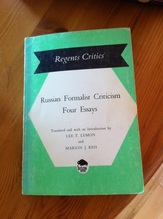
This image of art as a "roughening" of form to increase awareness is particularly relevant to Ron Crawford's method. Although colour and composition are important, the imaginative force of his paintings lies in their physically "roughened" surfaces and their ability to create "strange" and "rich" multidimensional forms that open up our senses to the complexity of the natural world that is their origin and end. Crawford's defamiliarization of the traditional process of landscape painting on a flat surface reawakens our senses to nature, while also allowing us to experience the "artfulness" of the created object, its existence as a man-made artifact -- a work of art. His paintings render the familiar world unfamiliar, so that we may experience its bright surfaces and dark recesses with a renewed sense of wonder. They call our attention to the uniqueness of the landscapes we inhabit, all the time reminding us of art's own singularity. They are truly "landscapes of the imagination."
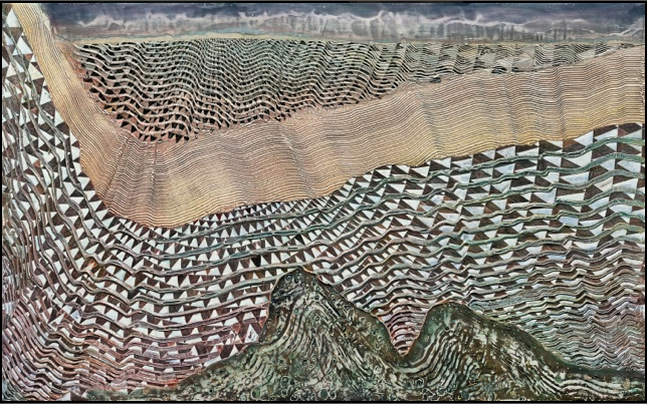
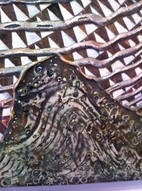
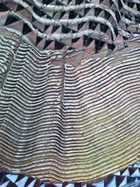
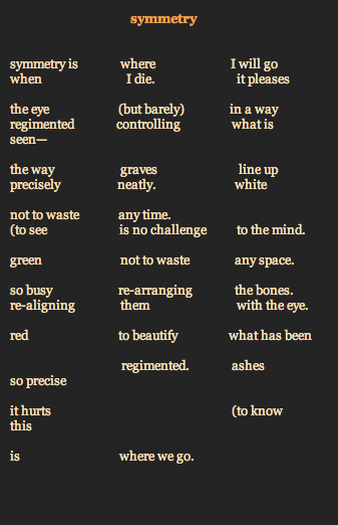
 RSS Feed
RSS Feed
